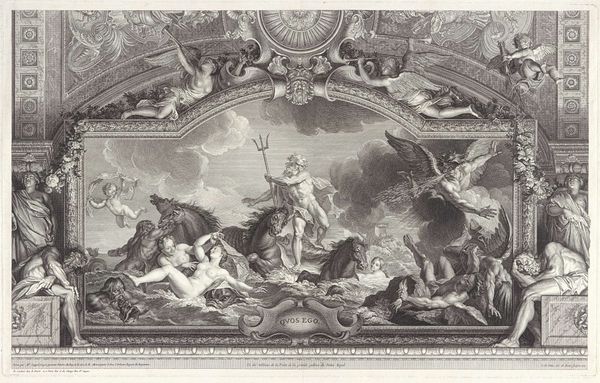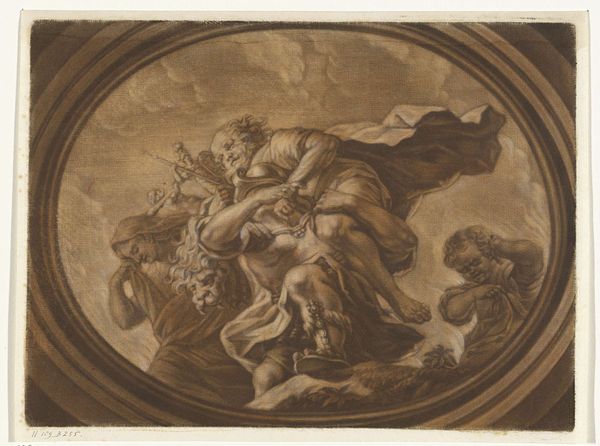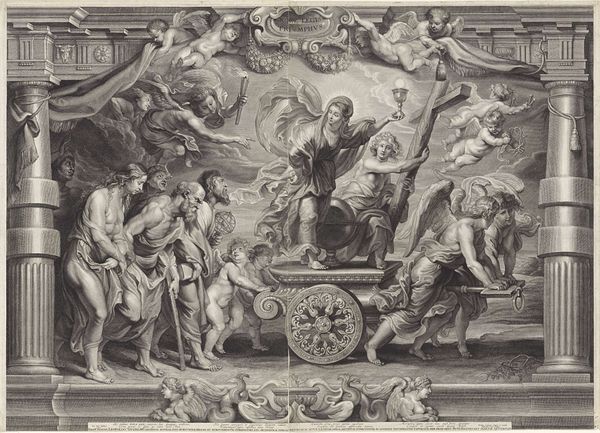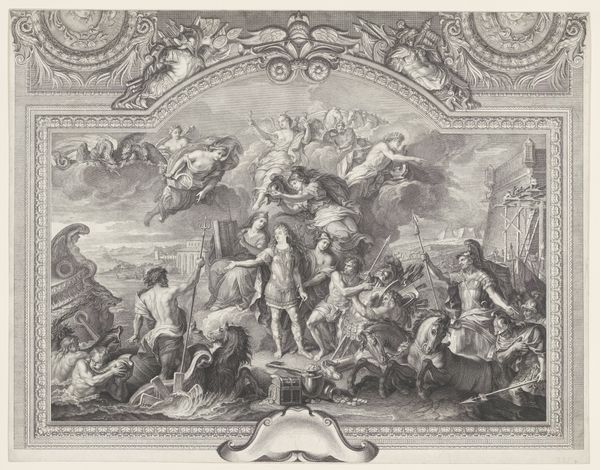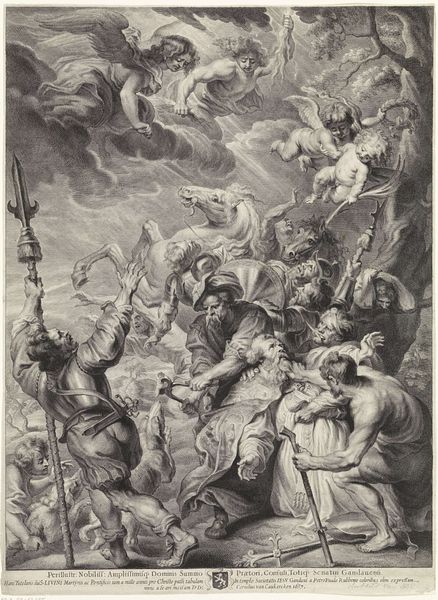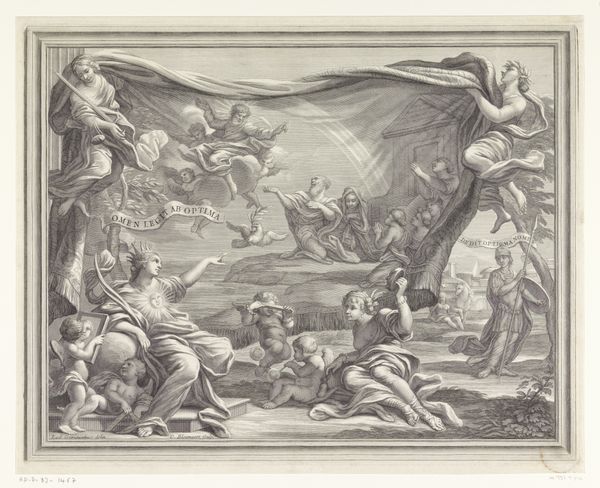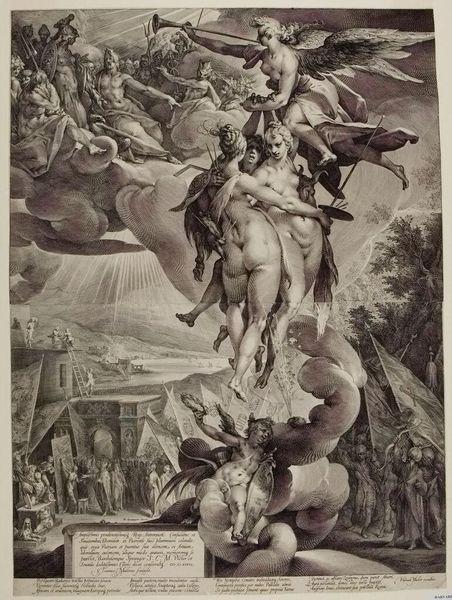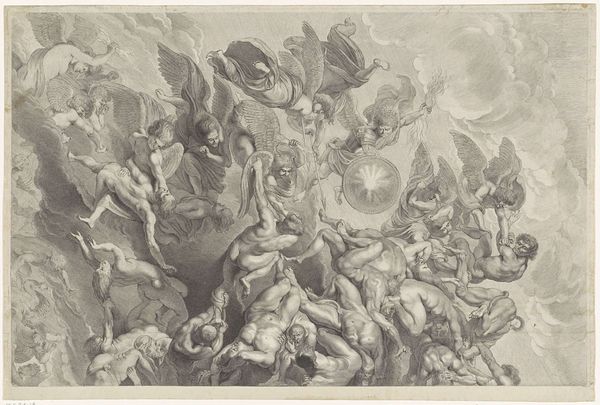
The Apotheosis of Romulus: Sketch for a Ceiling Decoration, Possibly for Hewell Grange, Worcestershire c. 1710
0:00
0:00
Dimensions: support: 457 x 521 mm frame: 584 x 643 x 75 mm
Copyright: CC-BY-NC-ND 4.0 DEED, Photo: Tate
Curator: There’s a real sense of Baroque drama in this sketch. Editor: Indeed. This is Sir James Thornhill's "The Apotheosis of Romulus," a preliminary design for a ceiling decoration, possibly for Hewell Grange, Worcestershire. It's an oil on canvas. All that energy, the figures rising…it’s quite striking. Curator: Apotheosis, the ascent to godhood. Romulus, founder of Rome, surrounded by mythological figures. The visual language speaks of power, legacy, and divinely ordained rule, doesn’t it? Editor: I wonder about the labor that would have gone into the final ceiling. The scale, the scaffolding, the sheer physical demand of painting something like this overhead. Thornhill was a master craftsman, building on traditions of artisanal knowledge. Curator: Absolutely. The iconography would have resonated deeply with the patrons, reinforcing their own sense of importance and connection to historical narratives. Editor: It reminds us that even grand artistic visions rely on very practical means. Curator: A fascinating dance between earthly effort and aspirations of immortality.
Comments
tatebritain 8 months ago
⋮
http://www.tate.org.uk/art/artworks/thornhill-the-apotheosis-of-romulus-sketch-for-a-ceiling-decoration-possibly-for-hewell-n06200
Join the conversation
Join millions of artists and users on Artera today and experience the ultimate creative platform.
tatebritain 8 months ago
⋮
This is probably part of a decorative scheme for Hewell Grange, the seat of the Earl of Plymouth. The story of Romulus and Remus, the founders of Rome, was a favourite subject for wealthy stately-home owners. They prided themselves on their classical learning, seeing parallels between 18th-century Britain and the rise of the Roman Empire. As the only successful British decorative painter, James Thornhill catered wholeheartedly for this taste. He played on national pride in an effort to beat competition from foreign-born artists. Gallery label, July 2024
